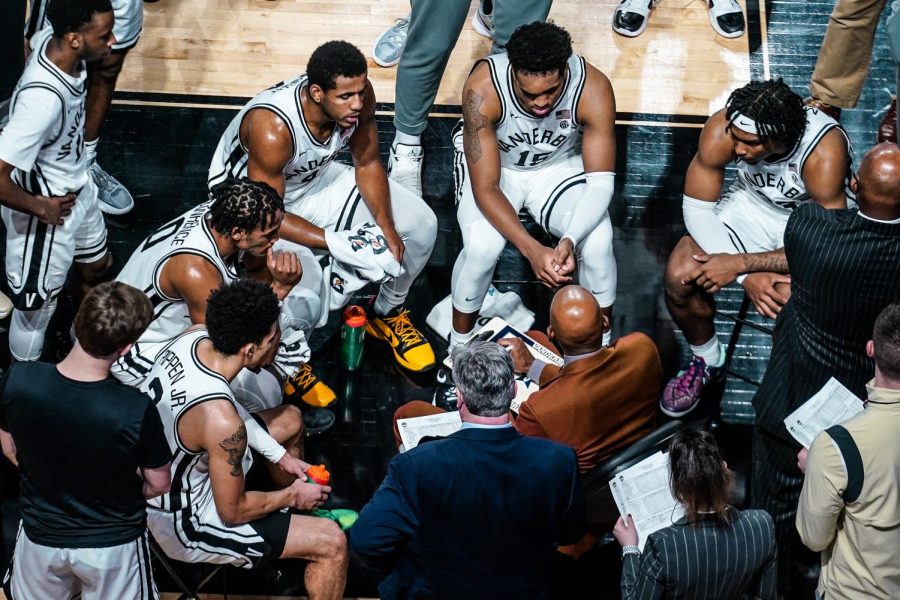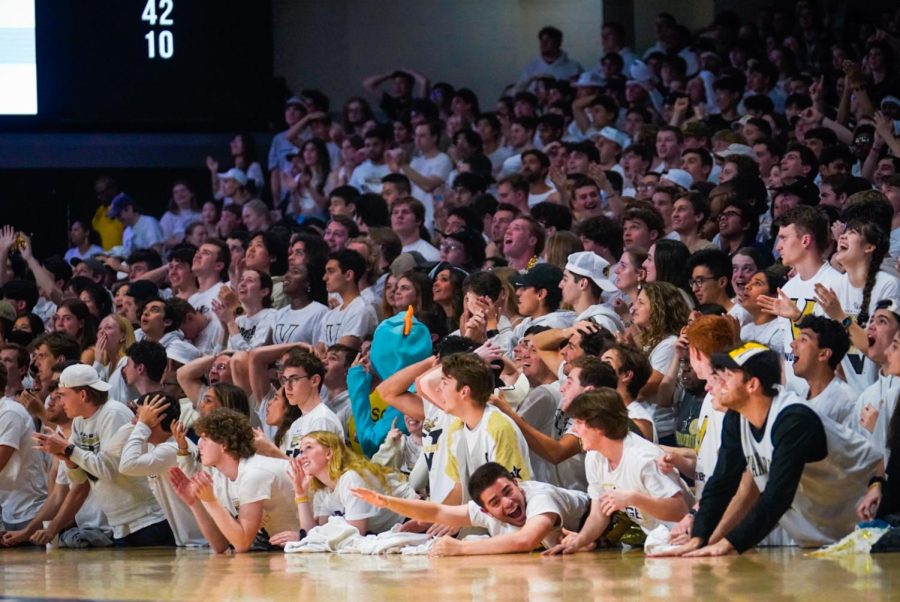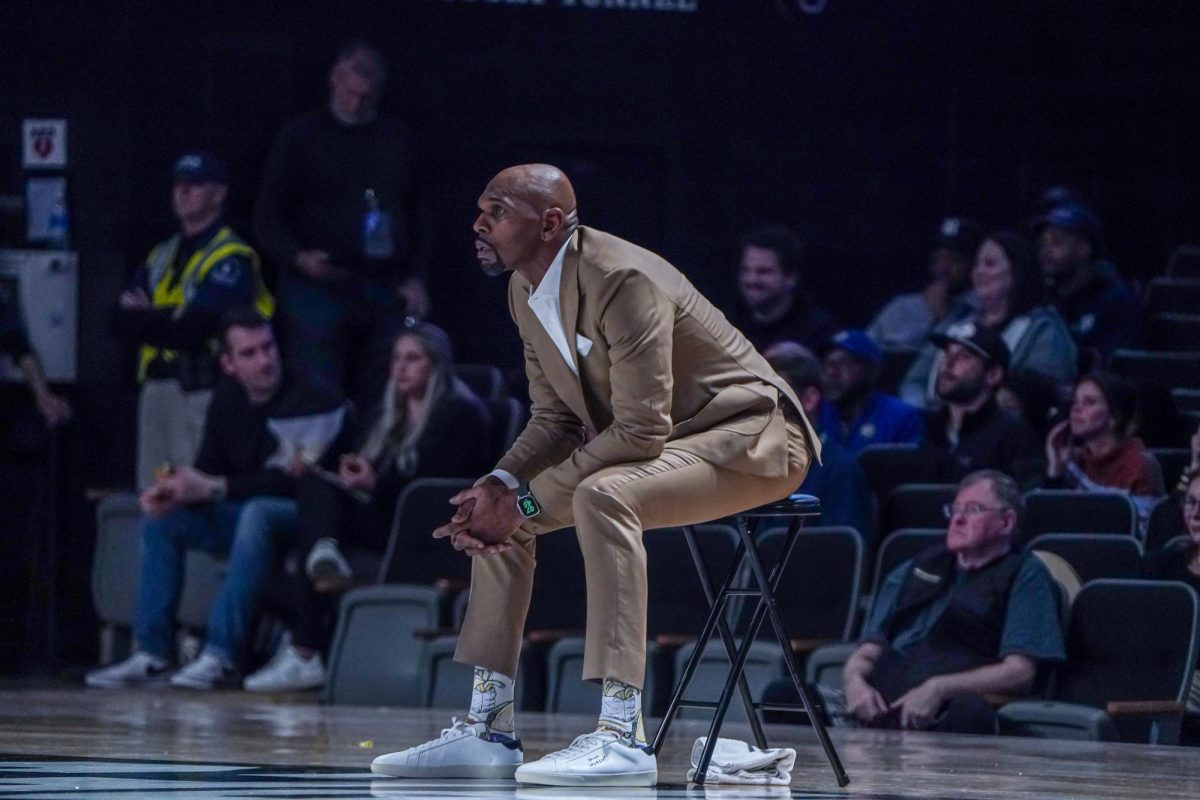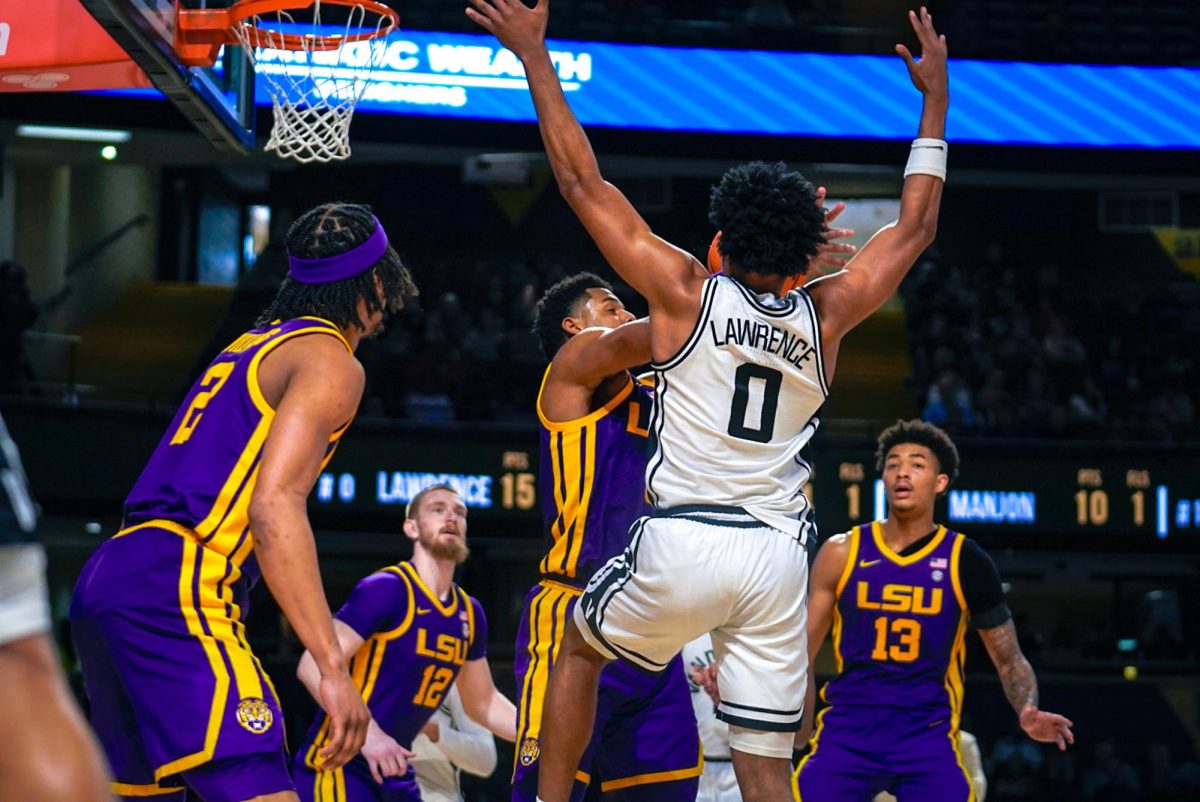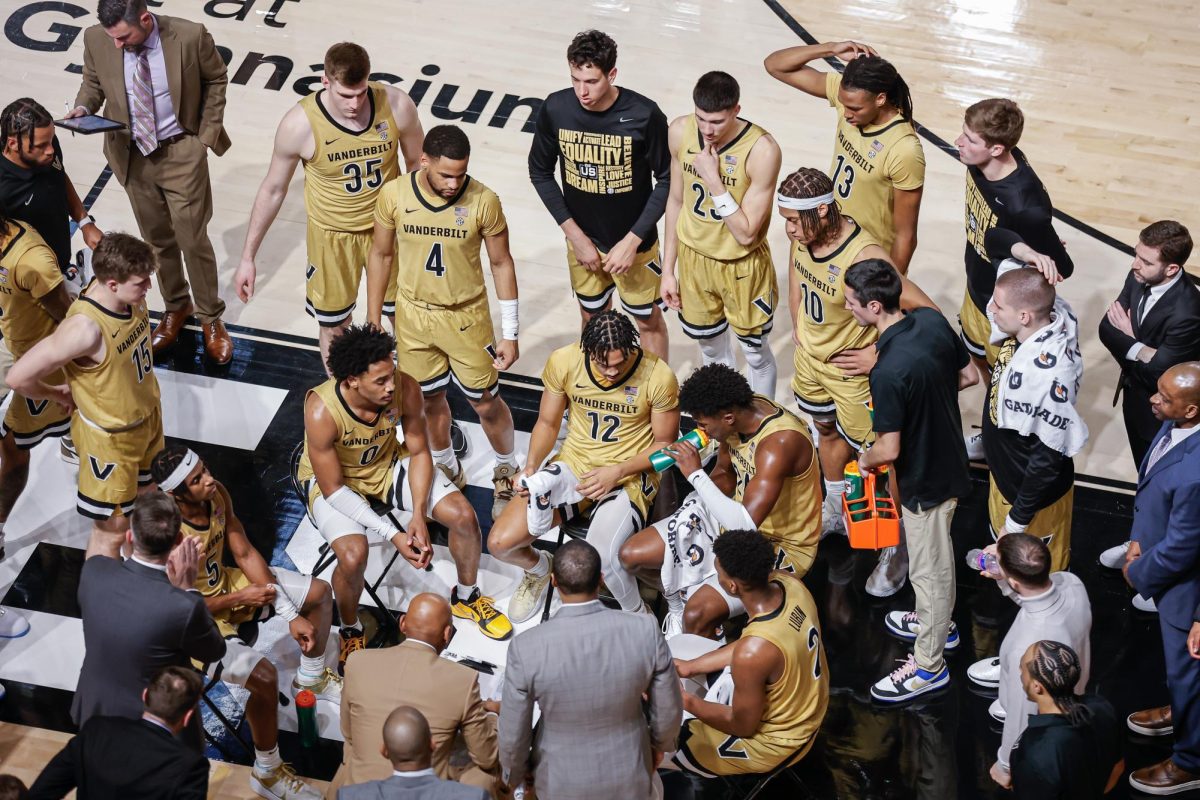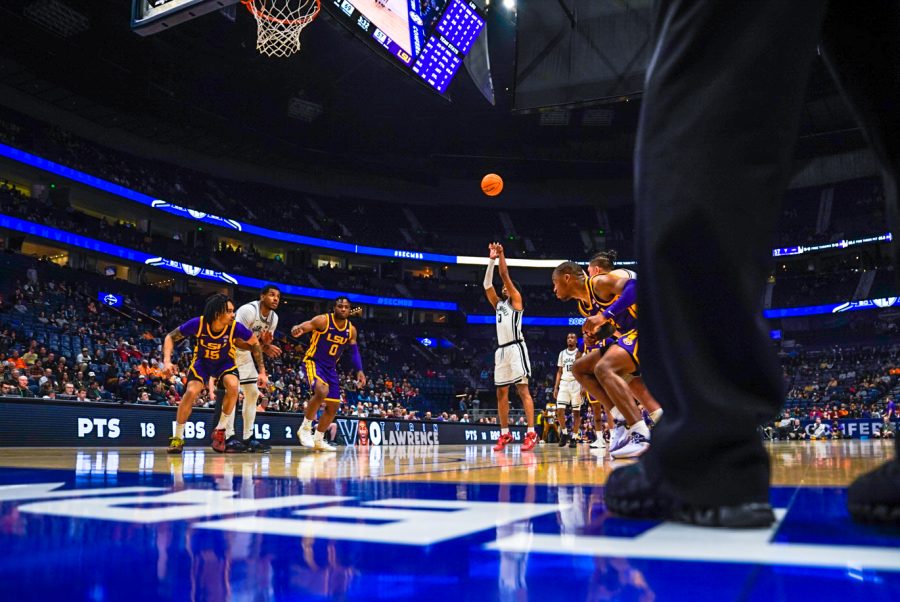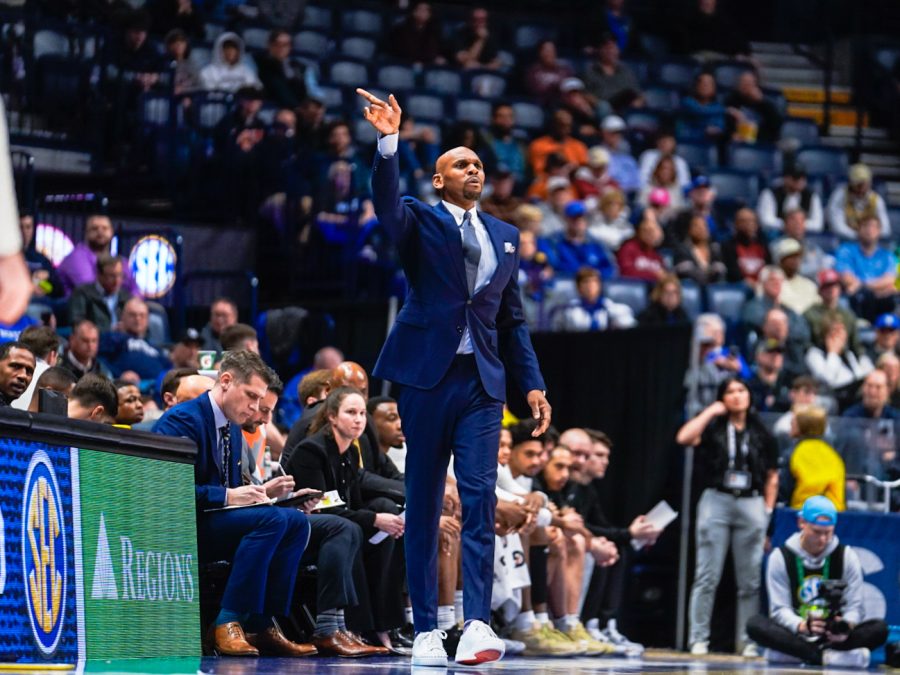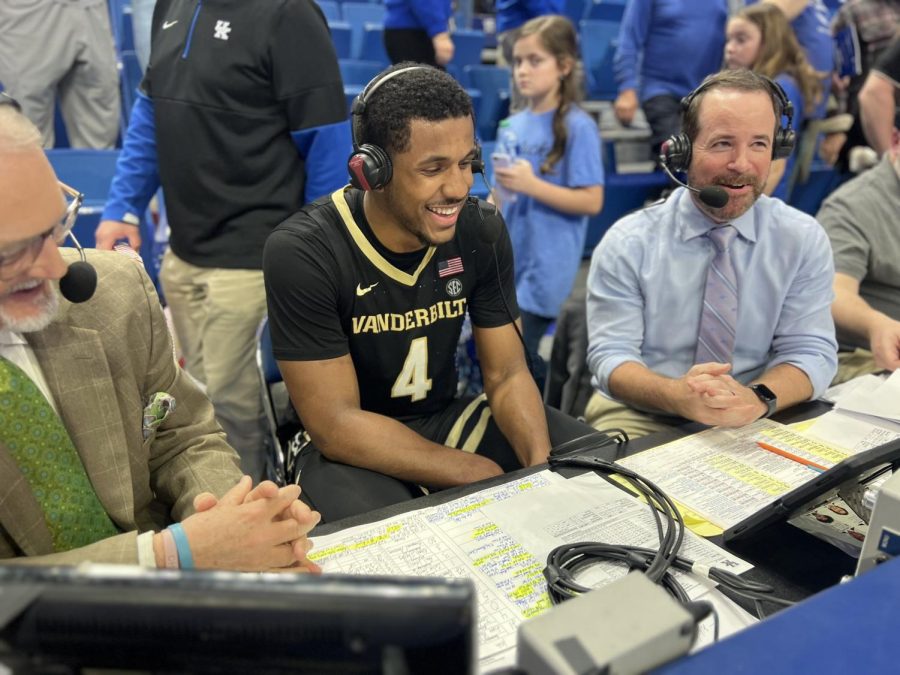If you watched Vanderbilt (5-3) play VCU on Nov. 17, you certainly hoped that a 37-point offensive performance was an anomaly. If you watched Vanderbilt play Temple last night, you now know that many of the same patterns that contributed to that 37-point outing are very much still around as the calendar has flipped to December.
A devastating 72-68 overtime loss to the Owls on Tuesday night proved much of what has happened on offense for Vanderbilt this season is not isolated. Patterns are beginning to form.
Ten-minute segments of one-point per minute basketball have become commonplace for this Commodore team, dating back to its first loss against VCU. Vanderbilt has averaged just 0.85 points per possession across those three losses and stretches early in the second halves of all three games have stuck out as concerning.
In the Commodores’ three losses, they have been outscored 61-21 combined in the first 10 minutes of the second half. Vanderbilt scored just six points in the first 10 minutes of the second half against VCU to the Rams’ 17. They tallied just 10 points in the first 10 minutes of the second half against SMU to the Mustangs’ 34. And on Tuesday, they notched just five points in the first 10 minutes of the second half to Temple’s 10. Something clearly isn’t working coming out of the halftime break.
But heading into a game on Friday against Loyola Chicago, one of the nation’s top 50 defenses, Vanderbilt is simply going to have to execute much more crisply.
So what is plaguing the Vanderbilt offense eight games into the season? Stagnation? Missed shots? Poor execution? Certainly a bit of everything. I’ll do my best to sort that out.
One Pass and Jack
One of the biggest things that head coach Jerry Stackhouse has talked about early this season has been the propensity for the ball to stick in the hands of primary scorers Scotty Pippen Jr. and Jordan Wright. While both are averaging 15-plus points, they have now taken 200 of the team’s 469 shots.
“Both of them, the ball stuck a little bit. Scotty had it going a little bit and we weren’t making shots so he kind of put that onus on himself to try and do it [himself]. I thought there were some opportunities that with all the attention he was getting, he got on the baseline a couple times and I felt like there were some guys in the corner he could have [passed to],” Stackhouse said after his team’s loss to SMU. “It’s not from selfishness. He wants to do things, he wants to make plays. Jordan is the same way.”
Although the Commodores are still down a pair of players who would likely contribute to those shooting numbers in Liam Robbins and Rodney Chatman, Vanderbilt needs to find ways to get others quality open shots, and that starts with their two primary ball-handlers.
On Tuesday, Vanderbilt averaged under 2.5 passes per possession (yes, I tracked every possession) on halfcourt possessions that yielded a shot. That number is far too low for an offense hallmarked on movement and spacing to create open shots.
One of the most telling indicators of Vanderbilt’s lack of ball movement is Pippen Jr. and Wright’s assist-to-usage ratio. Usage percentage measures the amount of possessions that end in a specific player’s hands, whether that be a turnover, free throw attempt or shot attempt. It does not incorporate assists and is not dependent on scoring. Assist percentage measures how often a player is assisting a teammate.
Last year, Pippen Jr. averaged five assists per game and boasted a 1.06 assist-to-usage ratio. This year, he is averaging under three per game and has a drastically lower 0.8 assist-to-usage ratio with a usage rate only slightly lower than last season. Similarly, Jordan Wright was averaging over two assists per game last year in six fewer minutes played and had a 0.87 ratio. This year, he is averaging under two per game and with a big jump in usage, has just a 0.58 ratio.
Some of these statistical differences can be attributed to missed shots—the 12 other Commodores who have seen action are shooting just 38 percent from the field. But much of their drop is due to a bit too much dribbling and forcing attacks downhill without looking for teammates.
“I think we were getting in the paint. It felt like they were close enough to make [a lot of] those shots,” Stackhouse said of his team’s offense on Tuesday. “I think there were some opportunities for us to kick out and that’s what the message was at halftime—let’s get in the paint and try to make plays for others.”
In losses to VCU and Temple, Vanderbilt had five and four total assists, respectively. Those marks are the third and second lowest assist totals during Stackhouse’s tenure and have both come in the last three weeks. The Commodores have fallen into stagnation and isolation that has far too often concluded with one or two passes and a jacked-up shot.
Slow and Steady Not Winning the Race
One of the more fascinating things about Stackhouse’s offense is that despite its value on the 3-point shot, Vanderbilt plays at a slow pace. This is interesting because in most cases, teams will need to get dozens and dozens of 3-pointers up to shoot a winning percentage.
Case in point, Alabama. The Crimson Tide get up 30 3-pointers per game at a 35-percent clip. They play at the fastest pace in the SEC, totaling an average of 73.1 possessions per 40 minutes, and are now 7-1 this season.
Vanderbilt, on the other hand, is getting off just 27 3-pointers per game at a 31-percent clip and is averaging eight fewer shots per contest than the Crimson Tide. The Commodores boast the slowest pace in the SEC at just 67.6 possessions per 40 minutes.
While Alabama is shooting a better percentage, the Commodores aren’t quite giving themselves enough 3-point looks to generate a winning number of makes. Stackhouse’s team notched at least 15 halfcourt possessions last night that lasted more than 20 seconds. When using that much shot clock, it often restricts a team to isolation basketball because a shot simply needs to get chucked up.
Take a look at a few of these possessions below. Many of them rely on very few passes that are isolated to the top of the key. Most are slow, lack opposite side off-ball movement and take a while to develop.
In their three losses combined, the Commodores have also logged just 25 fastbreak points. With a dynamic point guard, high-flying two-guard in Tyrin Lawrence and a few big jumpers like Jamaine Mann, Vanderbilt should be able to get out on the break a bit more often. If the Commodores can increase their pace and find some easier buckets, they can avoid forced shots late in the shot clock and potentially find a bit more success on the scoreboard.
Spacing?
While the ball sticking in the hands of Pippen Jr. and Wright is certainly an issue, Vanderbilt’s shooting rut is not making things any easier. Both players have gotten their feet in the paint a decent amount, but with shooting woes running rampant, teams are crashing on drivers extremely quickly. And the Commodore guards are noticing.
“We are kind of stagnant at times—have to get our movement better,” Wright said after the loss to Temple. “It starts with just making shots. Guys are packing the lane because we aren’t making shots so that’s creating a lot of stagnation, not moving the ball as much.”
Vanderbilt went just 12 of 27 on layups on Tuesday. While some of those were routine misses, many were highly contested and should hardly count as “layups”. This is mostly because of another number: 16-percent shooting from beyond the 3-point line.
For the second time this season, Vanderbilt totaled under five made 3-pointers and for an offense so predicated on that shot—and without their physical interior post presence—four made 3s is not a recipe for success.
In addition, looking at the team’s shot chart, it’s clear the Commodores’ looks were extremely isolated to singular areas on the court, making them easy to defend against.
But what we have seen in years past is that Stackhouse’s offenses thrive on motion and creativity on the clipboard. Vanderbilt finished last year with a top-75 offense in terms of efficiency according to KenPom. This year, their offensive efficiency has fallen outside of the top 100 through just eight games.
The system can work—Vanderbilt fans have seen it firsthand in the past. Even on Tuesday the Commodores’ first set was executed perfectly, leaving Myles Stute wide open for a 3. But the execution level has simply not been there thus far in the nonconference schedule and it shows in the numbers. Last year, the 3-ball accounted for 39 percent of Vanderbilt’s points—22nd in the nation. This year, it is accounting for less than 35 percent despite threes accounting for nearly the same portion of the team’s total field goal attempts.
Vanderbilt doesn’t need to reinvent the wheel, but it does appear that Stackhouse has to start getting more innovative and put his guys in better positions. Stute, one of Vanderbilt’s best spot-up shooters, and Shane Dezonie, who has hit five of his eight 3s this year, both played just 13 minutes on Tuesday. Trey Thomas, who has struggled immensely on both ends, totaled 33 minutes and is now hitting just 19 percent of his long-balls.
There are certainly reasons for these lineup moves, but in order to create proper space for Wright and Pippen Jr. to attack, it seems as though Vanderbilt needs to turn to a variety of players. Giving Terren Frank more opportunity to stretch the floor, throwing Gabe Dorsey into some sets and getting Wright off the ball more are all things that Stackhouse may try to employ as he searches for answers on the offensive end.











